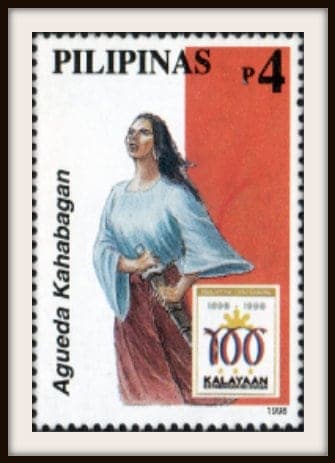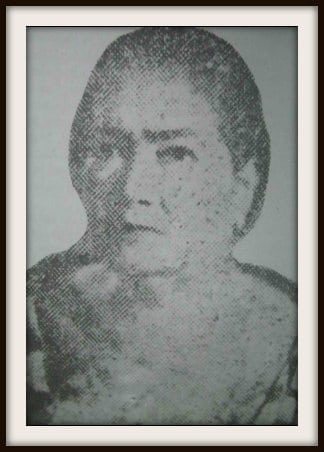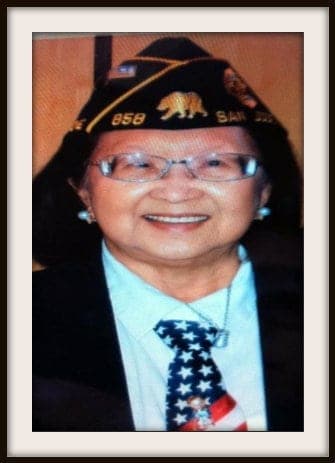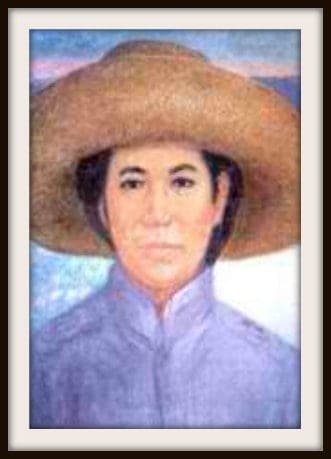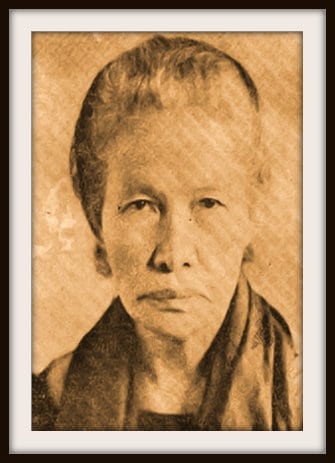6 Badass Filipina Warriors You’ve Never Heard Of
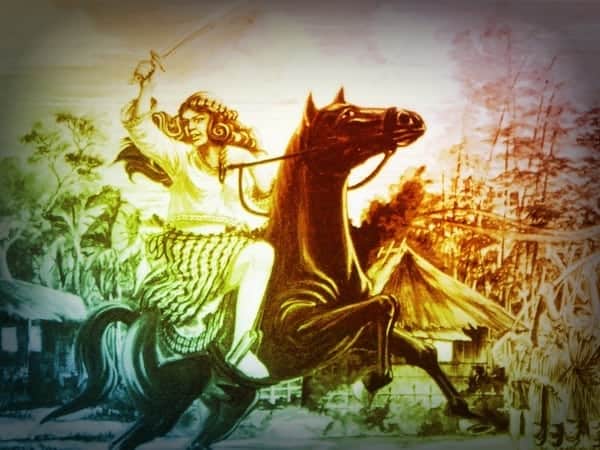
The term warrior typically conjures up images of ironclad gladiators or soldiers who braved out some of history’s bloodiest battles.
Here in the Philippines, both Andres Bonifacio and Lapu Lapu somehow fit the bill. However, there are also many unsung heroes whose direct participation in battles have been forgotten.
Surprisingly, some of them are women who proved that not all of our Filipina ancestors were the stereotypical Maria Clara.
Also Read: 9 Kickass Women in Philippine History You’ve Never Heard Of
For this short list, we’ve picked only lesser-known Filipina warriors (sorry, Gabriela Silang) who were directly involved in battles and didn’t just give donations. Without further ado, here are 6 badass Filipino heroines who showed “Pinay power” at it’s finest:
6. Agueda Kahabagan
Who is she?
Known in history as the “Tagalog Joan of Arc,” Agueda Kahabagan was the first and only woman general in the armed forces of the Katipunan. Hence, her contemporaries called her “Henerala Agueda.”
Historical records show that Agueda was commissioned by General Miguel Malvar to lead troops of men armed with rifles and daggers. For her participation in bloody combats against the Spanish and American forces, Agueda has officially conferred the title “general” on January 4, 1899.
Badass moment:
In October 1897, Agueda Kahabagan joined General Artemio Ricarte in a three-day attack on the San Pablo garrison in Laguna. While riding a horse, with a rifle in one hand and a bolo in the other, she led her men and fought against the enemy.
5. Patrocinio Gamboa y Villareal
Who is she?
Also known as the “Heroine of Jaro,” Patrocinio was born to a family of ilustrados but yearned to free her country from Spanish rule.
She secretly read the works of propagandists such as Jose Rizal and Graciano Lopez Jaena. Inspired by their advocacy, she eventually joined the revolutionary army to raise funds and heal wounded soldiers as a Red Cross nurse.
Badass moment:
Gamboa was dropped off the Spaniard’s radar due to her gender and affluence. She used these to her advantage and acted as an intelligence agent for the revolution.
In November of 1898, Gamboa voluntarily agreed to take a replica of the Philippine flag to the Santa Barbara headquarters of General Martin Delgado. They had to bring the flag for the inauguration of the Revolutionary government of the Visayas.
However, to reach that place from Jaro, they had to pass through several checkpoints heavily guarded by Spanish guards.
It didn’t take long before Gamboa came up with a clever plan. After wrapping the flag around her waist and covering it with her garments, Patrocinio took off in a carriage together with a young lieutenant who pretended to be her husband.
Upon reaching the roadblock, the two pretended to be a couple in a serious quarrel. Acting as a dominating wife to her submissive husband, Gamboa managed to escape the guards who found the sight too entertaining.
Tia Patron, as she was often called, died an old maid in November 1953.
4. Gregoria Montoya y Patricio
Who is she?
Born on November 28, 1863, in Kawit, Cavite, Gregoria Montoya was the lesser known heroine in the Battle of Calero Bridge in Dalahican, Cavite.
Just like other women who joined the revolution, Gregoria fought in the battle for a worthy cause: to avenge her husband’s death.
Badass moment:
During the Battle of Dalahican on November 10, 1896, Gregoria led some 30 Filipino rebels to fight against an infantry division of the Spanish army.
She was reportedly seen standing on a trench with one hand holding a bolo and another one firmly grasping the Katipunan flag.
However, she was more immortalized by the tragic end she met, which only proved how strong religion’s influence was towards less educated women of that era.
After climbing atop the fort, Gregoria shouted and reportedly waved a white piece of cloth commonly used by the priest to cover the chalice during a mass. She used it as a charm with hopes of warding off the bullets from the enemy.
Unfortunately, an artillery shell or cannonball from a Spanish gunboat hit her in the midsection, almost cutting her in half. Gregoria was instantly killed, along with fifteen of her soldiers.
3. Lourdes Evangelista-Castro
Who is she?
Lourdes Castro (July 23, 1926 – December 3, 2011) was one of only two Filipina WWII US veterans.
A Pharmacy graduate from UST, Castro is known for her volunteer works during the war. Aside from being part of the Medical Corps who attended to the needs of the wounded American soldiers, Castro was also a member of the guerrilla forces as well as the Philippine Commonwealth Army.
Later in life, she became a staunch advocate who pushed US Congress to pass laws that would benefit Filipino fighters and guerrilla members during WWII. These include the “Filipino Veterans Equity Compensation Act” (FVEC) which officially became law in February 2009.
Badass moment:
When she was just 18 years old, Castro got inducted as a member of the US Army due to two instances of heroism.
Also Read: The 10 Most Incredible Filipina Warriors of WWII
First was her notable role in freeing POWs in a concentration camp in Los Baños, Laguna. She then later risked her life when she went into the battlefield, pulling wounded soldiers out of harm’s way to treat their wounds.
In 1986, Castro migrated in California with her family. She continued to do volunteer work until her death in December 2011.
2. Trinidad Tecson
Who is she?
Dubbed as the “Mother of Biak-na-Bato,” Trinidad Tecson was already 47 years old when she joined the Katipunan. And unlike other women who joined the revolution, she did the manly tradition of Sanduguan or blood compact.
Also Read: 5 Historic Lies You Were Taught In School
She fought in the battlefield wearing a Katipunero outfit and survived fatal wounds numerous times. She also organized a group of women who would nurse sick and wounded Filipino soldiers during the war.
For her efforts, Tecson received a post-war recognition from the American Red Cross. She later became known as The Mother of the Philippine Red Cross. Trinidad Tecson died in 1928 at the age of 80.
Badass moment:
Trinidad Tecson joined the revolutionary army and fought a total of 12 battles.
Among her valiant acts were the capture of munitions from the civil guards at Caloocan as well as the capture of firearms from a jail in San Isidro. During one of these exploits, Tecson once pretended to be dead in order to evade capture.
Along with her husband, Julian Alcantara, and two of her servants, Tecson also successfully defended the fort of Biak-na-Bato during an enemy attack.
1. Teresa Magbanua
Who is she?
Teresa Magbanua is known in history as the “Joan of Arc of the Visayas” for her impressive feat as a woman general who battled against the Spanish and American forces.
Born on October 13, 1868, in Pototan, Iloilo, Teresa Magbanua or “Nay Isa” was a “tomboy” as a child. She would later be sent off to two colleges in Manila by her parents who were concerned by her behavior.
When the war broke out in Iloilo, she, along with her two brothers, joined the Katipunan. Magbanua enlisted under her uncle, General Perfecto Poblador.
During WWII, Magbanua also helped finance the guerrilla forces by selling all her properties. She later migrated to Mindanao where she died in 1947.
Badass moment:
Teresa Magbanua was a terrific female warrior who led groups of men in attacking Spanish soldiers. As a result, she was often called “General” by some of her followers even though she was not officially considered as such.
She bravely fought American forces in Jaro in 1899 despite personal setbacks. Her two brothers died in the hands of fellow Filipinos. Elias, then 19, was gunned down by a Filipino guide working with the American forces. Pascual, on the other hand, was brutally killed by Filipino bandits.
References
Ang mga Pilipino sa ating kasaysayan: a centennial resource book. (1998).
Chua, M. (2013). Patrocinio Gamboa, Babaeng Espiya na Taga-Iloilo. It’s Xiao Time!. Retrieved 30 June 2016, from https://goo.gl/5i01oe
Menor, B. & Otto, M. (2011). Lourdes Castro (1926-2011): The story of a rare and great hero.Inquirer.net. Retrieved 30 June 2016, from http://goo.gl/RZz64w
Palafox, Q. (2011). Lest we forget our unsung founding mothers. Inquirer.net. Retrieved 30 June 2016, from http://goo.gl/Jvg6Ij
Walker, D. (2008). Spanish Women and the Colonial Wars of the 1890s (p. 14). LSU Press.
Yoder, R. (1998). Philippine Heroines of the Revolution: Maria Clara they were not. Retrieved 30 June 2016, from http://goo.gl/1ISjeC
FilipiKnow
FilipiKnow strives to ensure each article published on this website is as accurate and reliable as possible. We invite you, our reader, to take part in our mission to provide free, high-quality information for every Juan. If you think this article needs improvement, or if you have suggestions on how we can better achieve our goals, let us know by sending a message to admin at filipiknow dot net
Copyright Notice
All materials contained on this site are protected by the Republic of the Philippines copyright law and may not be reproduced, distributed, transmitted, displayed, published, or broadcast without the prior written permission of filipiknow.net or in the case of third party materials, the owner of that content. You may not alter or remove any trademark, copyright, or other notice from copies of the content. Be warned that we have already reported and helped terminate several websites and YouTube channels for blatantly stealing our content. If you wish to use filipiknow.net content for commercial purposes, such as for content syndication, etc., please contact us at legal(at)filipiknow(dot)net

